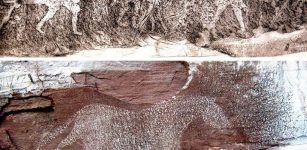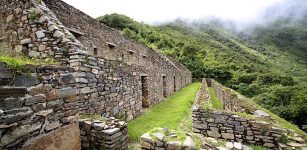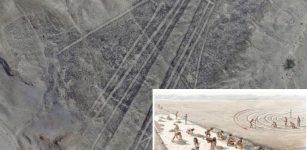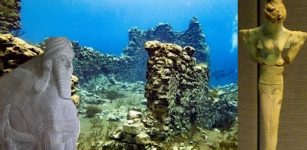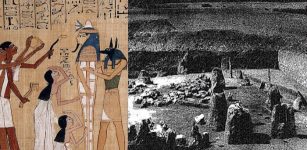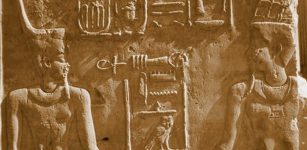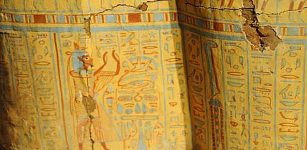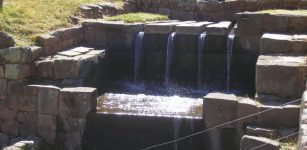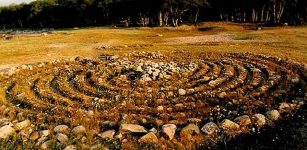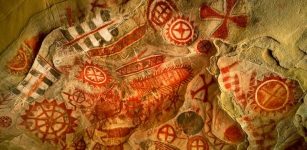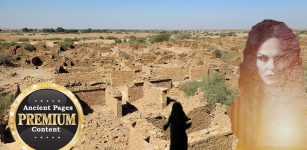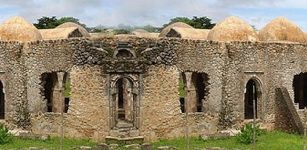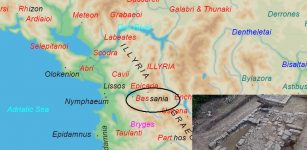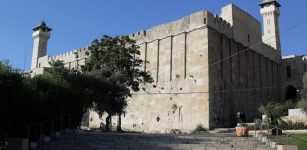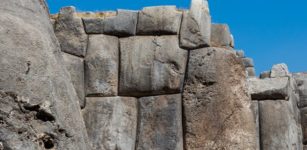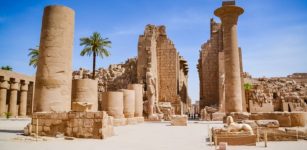Satyr Mask Discovered In Ancient Greek Emporium Pistiros In Thracians’ Odrysian Kingdom Near Bulgaria’s Vetren
AncientPages.com - A mask of a satyr, a male companion of ancient wine god Dionysus with horse-like features, has been discovered near the town of Vetren in Southern Bulgaria during the 2015 summer excavations of Pistiros, an Ancient Greek emporium, i.e. a trading post, inside what once was the Ancient Thracian Odrysian Kingdom,' reports Archaeology in Bulgaria.
An emporium (in Latin; "emporion" in Greek) was a settlement reserved as a trading post, usually for the Ancient Greeks, on the territory of another ancient nation, in this case the Ancient Thracian Odrysian Kingdom (5th century BC - 1st century AD), the most powerful Thracian state.

This mask of a satyr, a male companion of wine god Dionysus with equine features, which is in fact a fragment from a ceramic vessel, has been found during the 2015 summer excavations of emporium Pistiros near Vetren in Southern Bulgaria, an Ancient Greek trading post deep into the territory of the Ancient Thracian Odrysian Kingdom, which saw its height in the 4th century BC. Photo: Kmeta
Pistiros was set up as an emporium by Ancient Greek merchants from the Aegean Island of Thasos in the 5th century BC, and saw its height in the 4th century BC under the protection of the Thracian Odrysian Kings.
It was destroyed in 279-278 BC by the Celts, and never recovered as an emporium; an Ancient Thracian metallurgical settlement was built there in its stead.

Another photo of the satyr mask found during the 2015 summer excavations of emporium Pistiros, the Ancient Greek trading post in the Ancient Thracian Odrysian Kingdom, whose ruins are located near today’s Bulgarian town of Vetren, Septemvri Municipality, Pazardzhik District. Photo: Zname daily
The ruins of emporium Pistiros were discovered in 1988 by Polish-Bulgarian archaeologist Mieczyslaw Domaradzki.
The satyr mask that clearly depicts a human face with a nose and a mouth has been found on a fragment from a ceramic vessel and according to archaeologists is unique find.

The so called Pistiros Treasure discovered at the Ancient Greek and Thracian emporium Pistiros in Bulgaria’s Vetren. The treasure consists of 557 silver coins and 9 gold coins of King Philip II of Macedon, his son Alexander the Great, and their heir in Thrace Lysimachus (r. 306-281 BC). Photo: Septemvri Museum of Archaeology
The history of Ancient Greek emporium Pistiros in the Ancient Thracian Odrysian Kingdom (5th century BC – 1st century AD), the most powerful Thracian state, began in the 5th century BC. An emporium (in Latin; “emporion” in Greek) was a settlement reserved as a trading post, usually for the Ancient Greeks, on the territory of another ancient nation.
Pistiros was founded in the second half of the 5th century BC, in the first years of the Thracian Odrysian Kingdom, possibly during the reignof King Teres I (r. 460-448 BC) or his sons, King Sparatocos (r. 448-431 BC), and King Sitacles (r. 431-424 BC).
In the early 3rd century BC, however, more specifically in 279-278 BC, it was destroyed by the Celts and never recovered as an emporium. Instead, it was resettled by Thracians and became a center of metallurgy for the exports of metals from Thrace into Ancient Greece, as testified by the discovery of metallurgical tools, which were used to produce iron, bronze, and silver decorations such as fibulas, among others.
AncientPages.com
Source: Archaeology in Bulgaria

